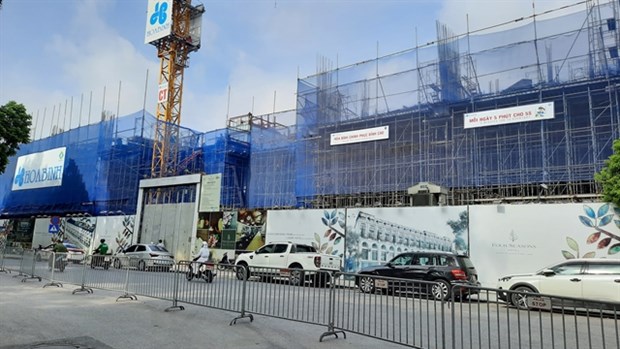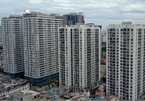legal bottlenecks and limited financial capacity of the developers.
 |
|
A project under construction in Hanoi
|
The financial report of Dat Xanh Group (DXG) showed that the company earned revenue of 2.89 trillion VND in 2020, equivalent to just half of 2019 and reported a loss of 126 billion VND – the first loss since the company was listed in 2009.
Inventories increased by 51 percent to 10.2 trillion VND as of December 31, making up for 55 percent of the company’s total assets. The inventories of completed projects were mainly at An Vien and Luxgarden projects while the inventories of unfinished projects were estimated around 9.6 trillion VND. Many unfinished projects did not see any progress in construction in 2020, such as Tuyen Son, Hiep Binh Phuoc – Thu Duc, C1, Gemriverside and Mo Street projects.
The inventories of Phat Dat Real Estate Development Joint Stock Company also increased by 16 percent to 9.3 trillion VND, or nearly 60 percent of the company’s total assets.
The financial report of An Gia Real Estate Development and Investment Joint Stock Company showed that as of the end of December, the company’s inventories increased 120 percent against the end of 2019 to around 5.7 trillion VND, or 59 percent of the total assets.
An Gia’s projects with high inventories included The Song, The Westage, River Panorama 1, Panorama 2, Sky 89 and Signial projects.
For Nam Long, inventories rose 40 percent to more than 6 trillion VND, mainly at unfinished projects like Akari City in HCM City, Waterpoint in Long An, Paragon Dai Phuoc, Vam Co Dong and Novia projects.
In the market, the inventories of finished projects were mainly those with prices of more than 35 million VND per sq.m.
According to Nguyen Van Dinh, deputy general secretary of the Vietnam Real Estate Association, in major cities like HCM City and Hanoi, many projects had prices of around 25 million VND per sq.m but now were pushed up to 30-40 million VND per sq.m, the sales were not very good.
He cited statistics that only around 26.6 percent of offerings in the capital city were sold in 2020, compared to 65.4 percent in 2019, 70.6 percent in 2018 and 60.7 percent in 2017.
Many projects remained unfinished and did not see any progress in construction in 2020 due to the impact of the COVID-19 pandemic, legal bottlenecks and limited financial capacity of the developers, according to Dinh.
Le Hoang Chau, President of the HCM City Real Estate Association, said that the inventories of listed enterprises alone did not fully reflect the real inventories of the property market.
Increasing inventories would weigh on enterprises in particular and the whole economy in general, Chau said.
However, Dinh said that the progress of many projects would be sped up in 2021, creating more supply for the market when the legal frameworks were tackled and improved financial capacity of developers./.VNS

Five trends identified for real estate market in 2021
While 2020 is believed to have changed the real estate industry, trends in the sector this year are forecast to sustain or be aligned with demand in the market.